Materials: 1. Water 2. A Clear Plastic Bottle With A Cap 3. Dish Washing Soap 4. Glitter Steps: 1. First,

Materials: 1. Water 2. A clear plastic bottle with a cap 3. Dish washing soap 4. Glitter Steps: 1. First, fill the bottle until it reaches 3 quarters full 2. Next, add 3 drops of dish washing soap in the bottle. 3. Then, sprinkle in 3 pinches of glitter. 4. Next, put the cap on tightly 5. Finally, turn the bottle upside down. And hold it by the neck. Quickly, spin the bottle in a circular motion for 10 seconds and stop to see a mini tornado in your bottle. Lesson: When you spin the bottle, it creates a water vortex. The water is spinning around the center of the vortex because of centripetal force. Centripetal force is an inward force directing an object or fluid towards the center of its circular path. Examples of natural vortexes are tornadoes, hurricanes, and waterspouts.
More Posts from Funscienceexperiments and Others
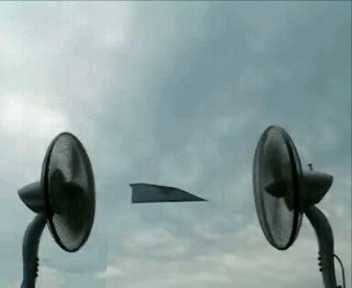
A perfect aerodynamic balance that makes the paper plan to float…

Rub your hands on the handles of a Chinese resonance bowl and you can generate a spray of tiny droplets. The key to this, as the name suggests, is vibration. Rubbing the handles vibrates the bowl, causing small oscillations in the bowl’s shape that are too small for us to see. But those vibrations do produce noticeable ripples on the water in the bowl. When you hit the right frequency and amplitude, those vibrations disturb the water enough that the up-and-down vibration at the surface actually ejects water droplets. The vibration of the bowl affects water near the wall most strongly, which is why that part of the bowl has the strongest reaction. It takes even larger amplitude vibrations to get droplets jumping in the middle of the bowl, but you can see that happening in this video of a Tibetan singing bowl. (Image/video credit: Crazy Russian Hacker, source)

Cat Fact
Cats have relatively few taste buds compared to humans. Domestic and wild cats share a gene mutation that keeps their sweet taste buds from binding to sugary molecules, leaving them with no ability to taste sweetness. Their taste buds instead respond to amino acids, bitter tastes, and acids.
Follow for more Cat Facts!
How to make a lava lamp in a cup! Instructions here.
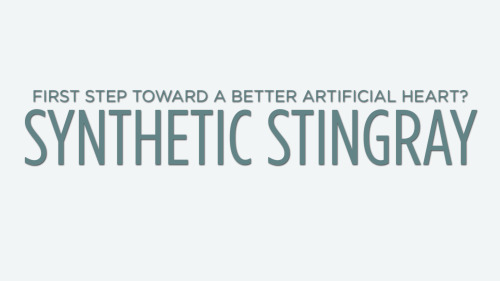
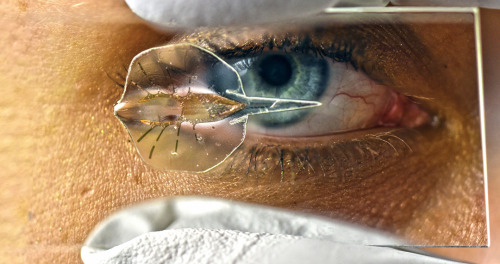
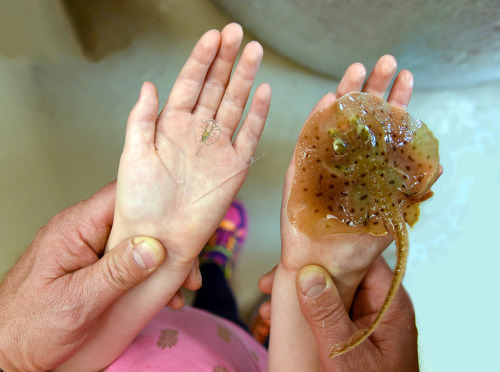
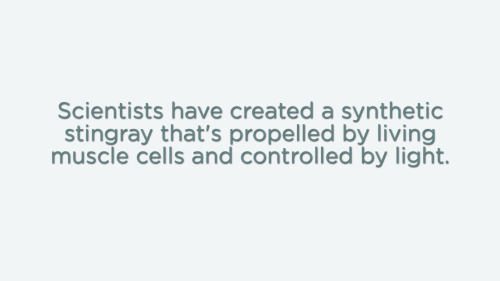
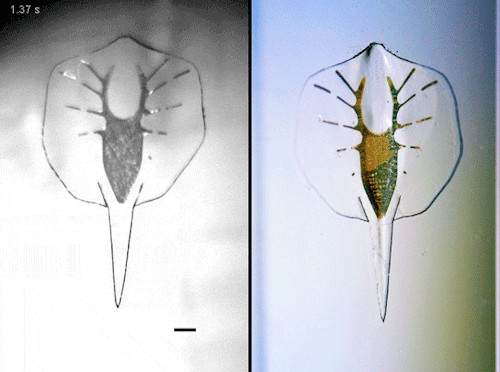

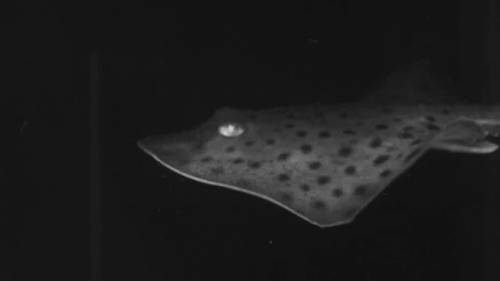
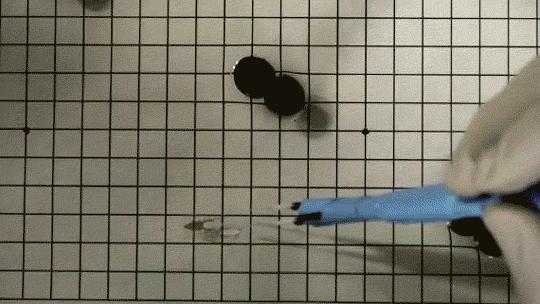
I’ll say it again: Scientists have created a synthetic stingray that’s propelled by living muscle cells and controlled by light.
!
But the ultimate goal isn’t a cyborg sea monster - it’s a human heart.
“I want to build an artificial heart, but you’re not going to go from zero to a whole heart overnight,” says Kit Parker, a bioengineer and physicist at Harvard University’s Wyss Institute. “This is a training exercise.”
Full, fascinating story here.

A rare flipped iceberg in Antarctica photographed by artist Alex Cornell.
(Artist)
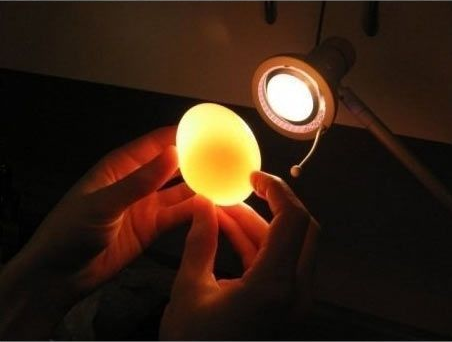






Weekend Project: Do Osmosis with Food
Osmosis is the movement of water across semi-permeable membrane. Experiment with eggs to demonstrate the process of water transport into and out of cells. Get started here!
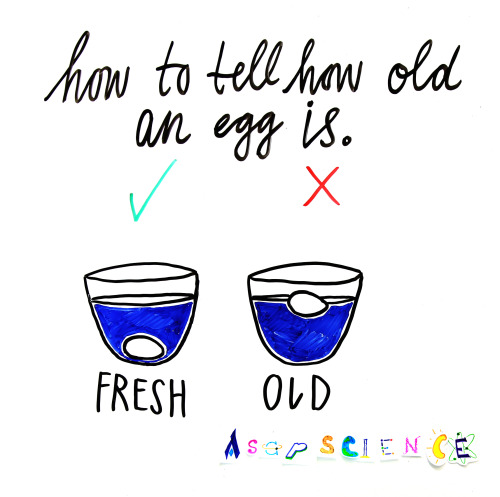
How to tell how old an egg is.
Egg shells are porous, so as they age, they absorb more air, making them float! But old doesn’t mean bad–before you throw out those floaters, crack ‘em open; if they smell and look like a normal egg, you’re in the clear.
Source: http://bit.ly/U5sHN3
FACT #3: Why Does the Earth Only See One Side of the Moon?
Keep reading
Heat and air movement demonstration 2 of 2. When you light a tea bag on fire, it creates a column of hot air that’s inclined to rise. And when the tea bag becomes light enough, it gets carried along!
If you want to try it yourself, there’s more information here. Make sure you’re using a simple paper teabag that you can unfold into an approximately cylindrical shape–fancy ones, like the pyramids, won’t work. And please take appropriate fire safety precautions! I keep a fire extinguisher handy for these demos.
-
 valentinaquevedo liked this · 7 years ago
valentinaquevedo liked this · 7 years ago -
 funscienceexperiments reblogged this · 9 years ago
funscienceexperiments reblogged this · 9 years ago -
 girlscoutmonster-blog liked this · 9 years ago
girlscoutmonster-blog liked this · 9 years ago -
 vintage-cate liked this · 9 years ago
vintage-cate liked this · 9 years ago -
 funscienceexperiments reblogged this · 9 years ago
funscienceexperiments reblogged this · 9 years ago
Hi everyone! I'm Ashley P. and I'm a Girl Scout who wants to make a difference in the world. Currently, I've been working on my Gold Award Project, which is a project where Girl Scouts solve an issue in their community to earn the Gold Award. The Gold Award is the highest award a Girl Scout can achieve. In my project, I'm addressing the issue on how there are a lack of women in the STEM field by creating a program to do fun science experiments with younger girls. Also, I constructed this blog for parents and children to do exciting and simple experiments with their kids to spark a passion in this subject like what happened to me as a child. I hope you enjoy and try to accomplish the experiments I post! Also, please have adult supervision while completing these experiments.
210 posts